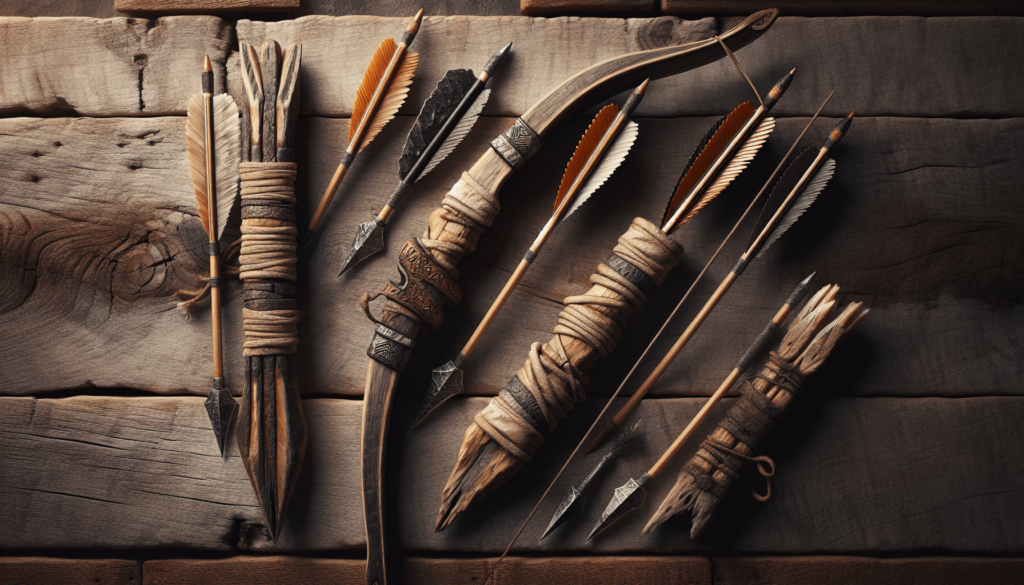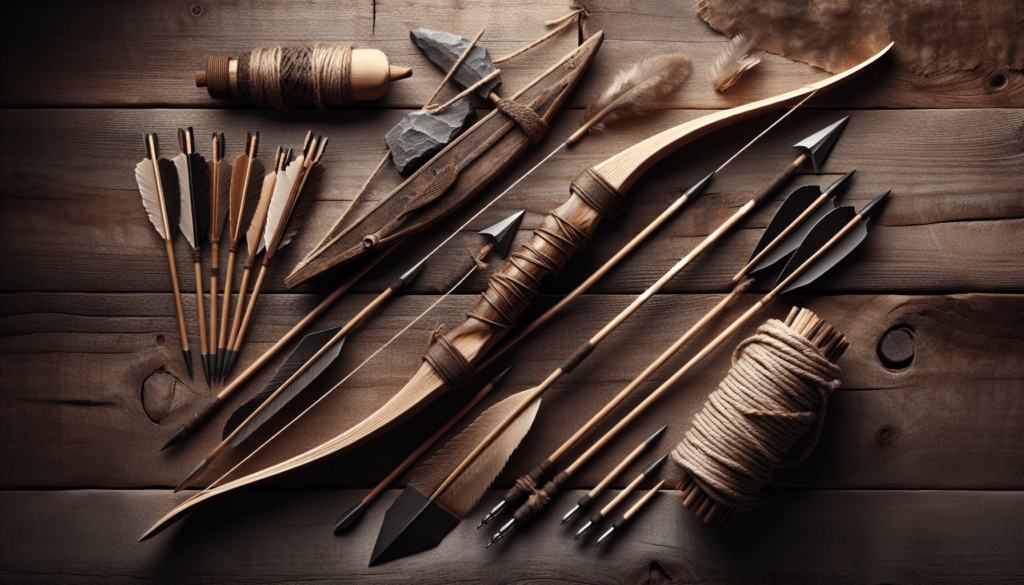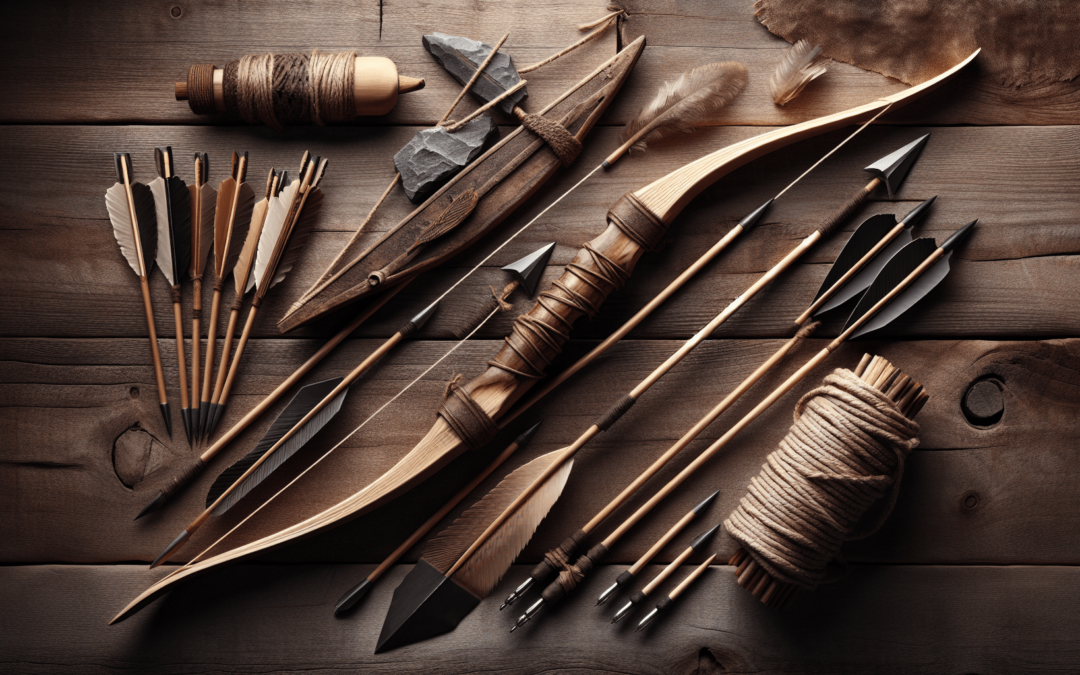Building A Survival Bow And Arrows
In the wilderness, relying on your resourcefulness can make all the difference, and that’s exactly what this guide is here to help you with. You’ll learn the essential steps to craft your own survival bow and arrows from natural materials found in the wild. With just a bit of patience and the right know-how, you can create a functional weapon to help you hunt and protect yourself in dire situations. So, get ready to channel your inner survivalist and discover the rewarding process of building your very own bow and arrows. Have you ever wondered what you would do if you found yourself lost in the wilderness without any modern tools for hunting or defense? Building a survival bow and arrows could be a game-changer, providing you with a means to hunt for food and protect yourself. Fortunately, the skills needed to craft a simple yet effective survival bow and arrows are within your reach. Let’s embark on this exciting journey together!

Gathering Materials
The first step in constructing a survival bow and arrows is to gather the necessary materials. This process involves careful selection to ensure your finished product is both functional and durable. Don’t worry—most of these materials can be sourced from nature.
Selecting Your Bow Wood
Choosing the right wood is crucial for making a reliable bow. You want a wood that is flexible enough to bend without breaking but strong enough to store and release the energy needed for shooting an arrow.
| Wood Type | Features |
|---|---|
| Yew | Known for its flexibility and strength. A traditional choice for bows. |
| Hickory | Durable and readily available; holds up well in different weather conditions. |
| Osage Orange | Extremely strong and flexible, though harder to work with. |
| Ash | Lightweight and flexible, ideal for beginners. |
Finding Arrow Shafts
Your arrows need to be straight, strong, and lightweight. Look for the following types of wood for your arrow shafts:
| Wood Type | Features |
|---|---|
| Dogwood | Strong and naturally straight, making it an excellent choice. |
| Birch | Commonly found and easy to work with. |
| Willow | Flexible and lightweight, though it may need more straightening. |
| Maple | Strong, yet flexible; a popular choice for arrows. |
Additional Materials
Besides the wood, you’ll need some other items to complete your bow and arrows. Here’s a quick list:
- Bow String: Durable, flexible fibers such as sinew, plant fibers, or even paracord if you have it.
- Arrow Points: Hard, sharp materials like bone, stone, metal scraps, or improvised materials.
- Feathers (for fletching): Three feathers per arrow to help stabilize during flight.
- Tools: A knife, axe, or any sharp object for carving and cutting.
Crafting the Bow
Now that we’ve gathered our materials, let’s dive into crafting your survival bow.
Shaping the Bow
The first task is to shape the wood into a bow. This process requires patience and attention to detail.
- Selecting the Stave: Select a stave that is about your height, giving it the maximum potential power and ease of use.
- Tapering the Ends: Thin out the ends of your stave to be more flexible. The center (or handle) should be thicker and more robust.
- Drawing the Bow Shape: Use your knife to carve gently, following the natural curve of the wood.
- Smoothing Out: Sand down any rough edges to prevent splintering and wear on the string.
Stringing the Bow
Stringing your bow will require a strong and flexible bow string. Here’s how to do it:
- Notches: Carve notches at both ends of your bow where the string will be attached.
- Securing the String: Fit one end of the string into the notch. Pull it tight but with enough give to create the desired flex in your bow.
- Tuning: String and unstring the bow multiple times to let the wood settle into its new form and ensure the string is secure.
Making Arrows
With your bow ready, it’s time to make the arrows. This step requires precision and care.
Straightening Arrow Shafts
Natural wood often needs some straightening:
- Heatsource Preparation: Use hot coals or heated rocks to carefully bend the wood into a straight line.
- Adjusting: Repeat the heating and bending process until the shafts are as straight as possible.
Crafting Arrowheads
Creating effective arrowheads can make a significant difference when hunting.
- Material Selection: Choose your material (stone, bone, metal, etc.).
- Shaping the Point: Use your knife or a sharp rock to chip away and shape it into a point.
- Attachment: Secure the arrowhead to the shaft using sinew or plant fibers. You can also add natural adhesives like tree resin for added security.
Fletching the Arrows
Fletching stabilizes the arrow during flight. Here’s how to do it:
- Feather Preparation: Split your feathers into halves.
- Attachment: Attach three feathers evenly around the circumference at the back of your arrow shaft using sinew or plant fibers.
- Alignment: Ensure all feathers are aligned to maintain balance in flight.
Testing and Adjusting
Before relying on your bow and arrows in survival situations, it’s crucial to test and adjust them.
Testing the Bow
- Flexibility Check: Ensure the bow bends evenly without any weak spots.
- Draw Weight: Test the draw weight by pulling back the string and releasing several times. Adjust as needed for comfort and power.
Testing Arrows
- Straight Flight: Shoot your arrows at a target to make sure they fly straight.
- Accuracy: Adjust the fletching and arrowheads if they wobble or veer off course.

Maintenance Tips
Maintaining your bow and arrows will ensure they last longer and remain effective.
Bow Maintenance
- String Care: Regularly check for frays and replace the string when necessary.
- Wood Care: Store the bow in a cool, dry place to prevent warping and cracking.
Arrow Maintenance
- Arrow Shaft: Check for straightness and realign as needed.
- Fletching: Ensure the feathers are securely attached and replace any damaged ones.
Conclusion
Building a survival bow and arrows is not just a skill; it’s an empowering practice that could one day save your life. By combining nature’s resources and human ingenuity, you’ll have an effective tool for both hunting and protection. Enjoy the process and remember that patience and practice make perfect. Happy crafting!
Now, equipped with your hand-crafted bow and arrows, you’re not just surviving—you’re thriving in the wild! Keep learning, stay resourceful, and always respect the land that provides for you.

